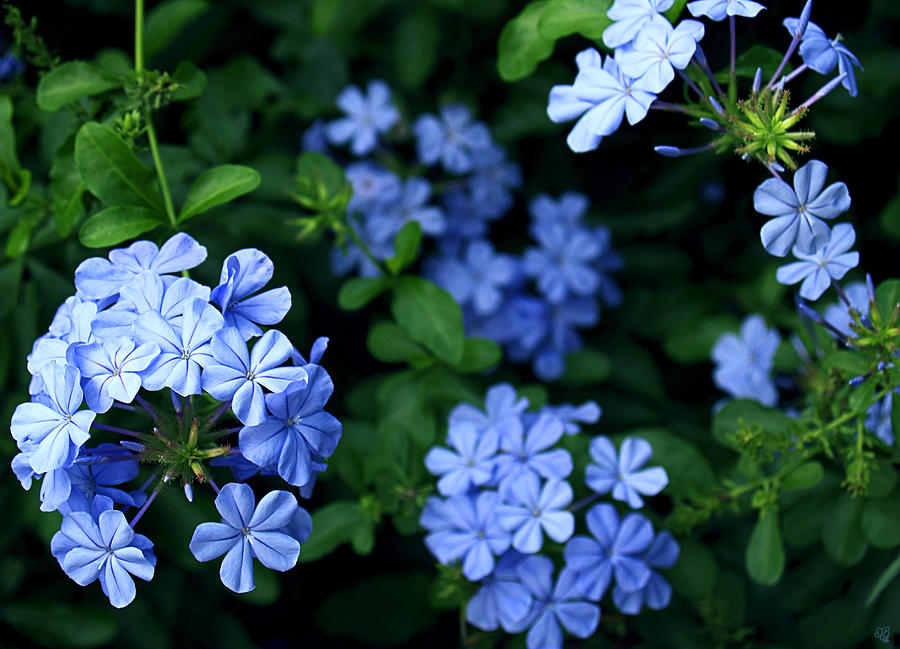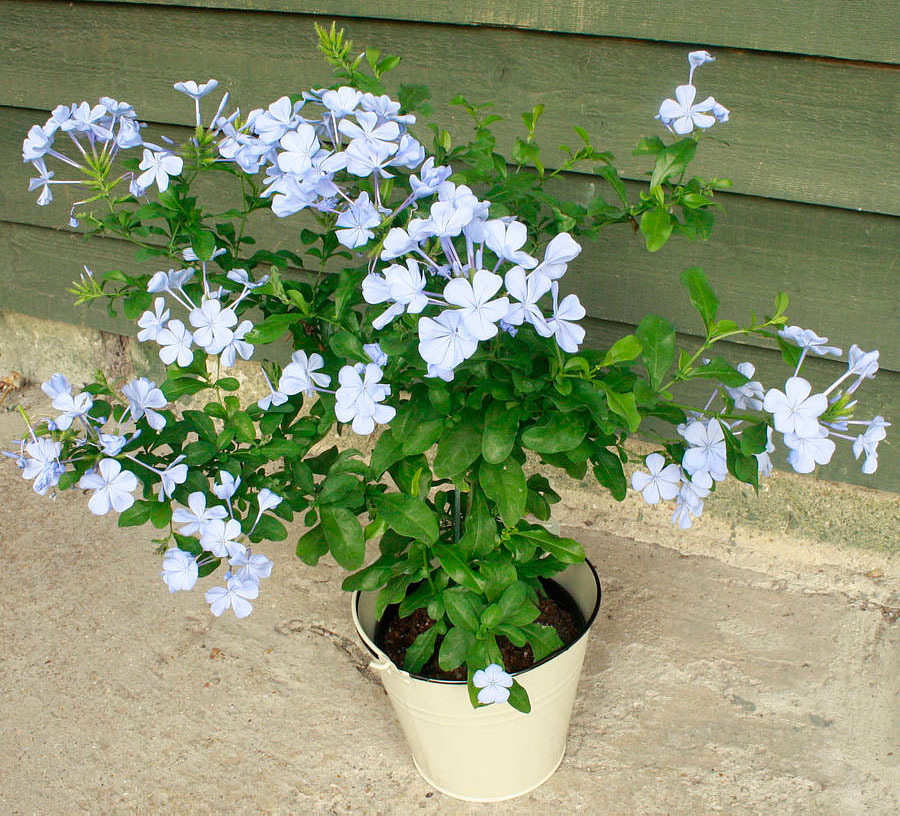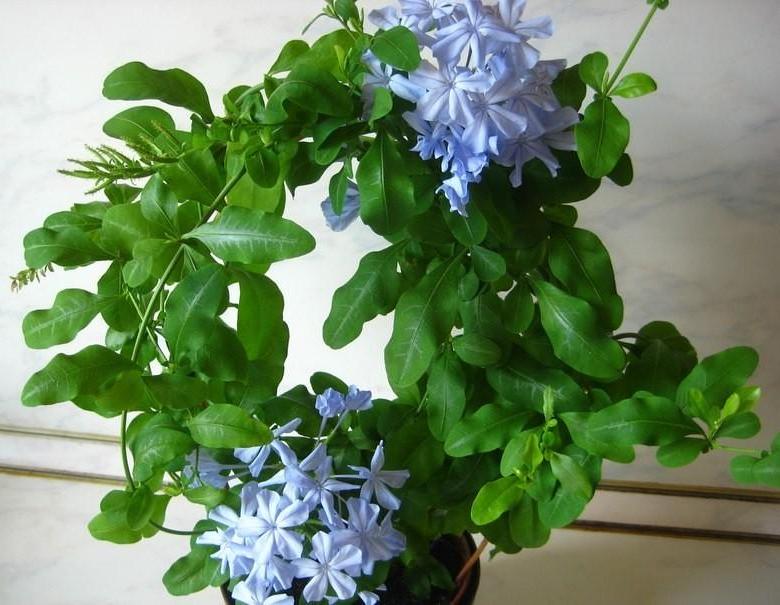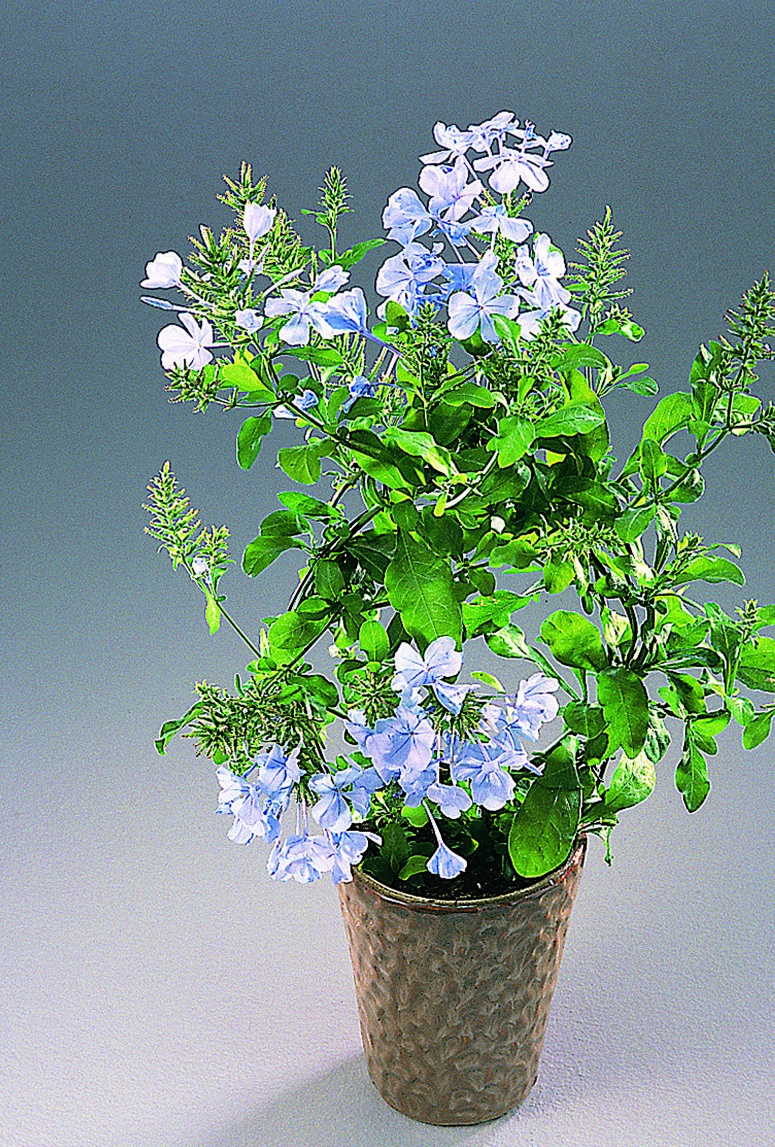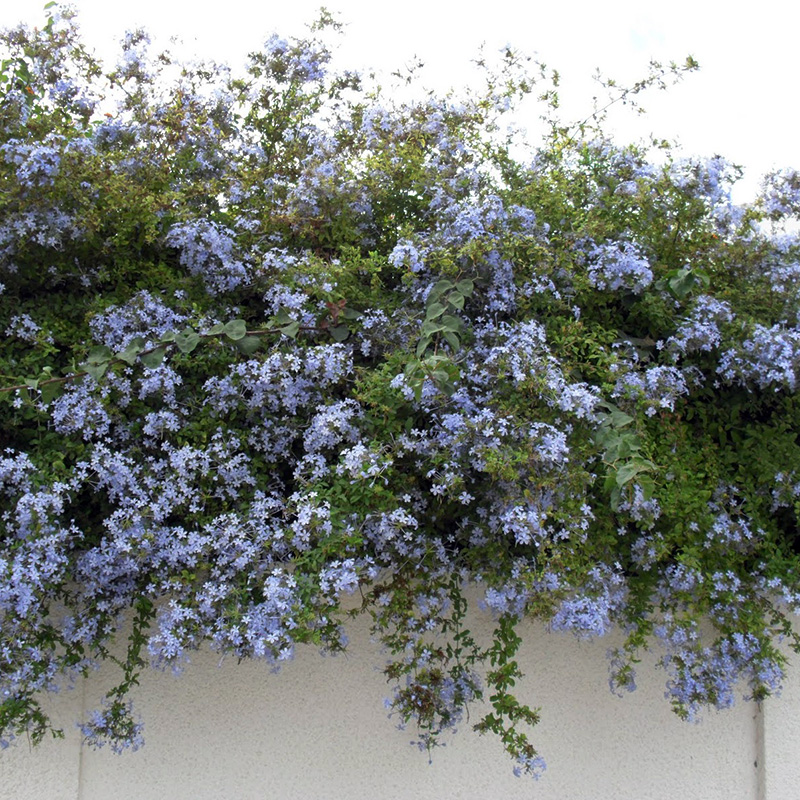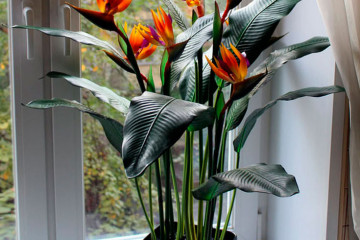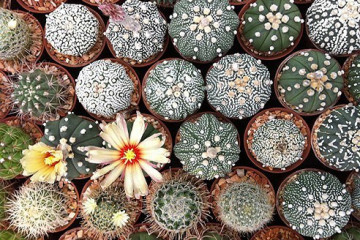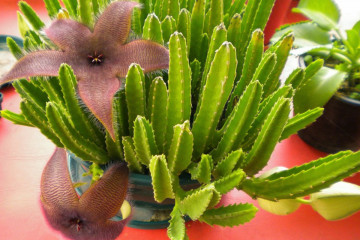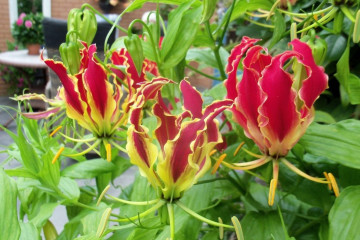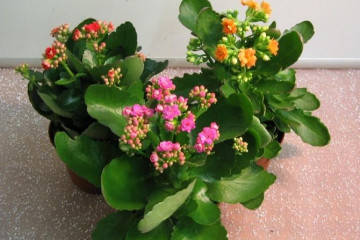Blue pig: the basics of home care and examples of popular varieties
Content:
Pig, or plumbago, has an amazing palette of its colors. There are no such shades among other flowering plants. Flowers, collected in loose bunches, cover the entire length of the stem. Inflorescences of incredible beauty, shoots that lend themselves to any form allow you to create beautiful compositions for decorating houses, apartments and workplaces. The pig is formed in the form of a shrub, tree, ball, or planted in a pots as ampelous.
Description of the flower
A resident of the subtropics of southern Africa has retained the demands of her homeland for room life. Abundant lighting and watering is necessary for her throughout the year. Long lashes of a lead can grow more than a meter, covered with flowering umbrellas. Leaves with fine pile are painted in a soft green color, very pleasant to the touch. Some species have stipules. Flowers about 3 cm in diameter, collected in large loose bunches. The abundant flowering of the lead looks very impressive and festive. The inflorescences exude a delicate, subtle aroma.
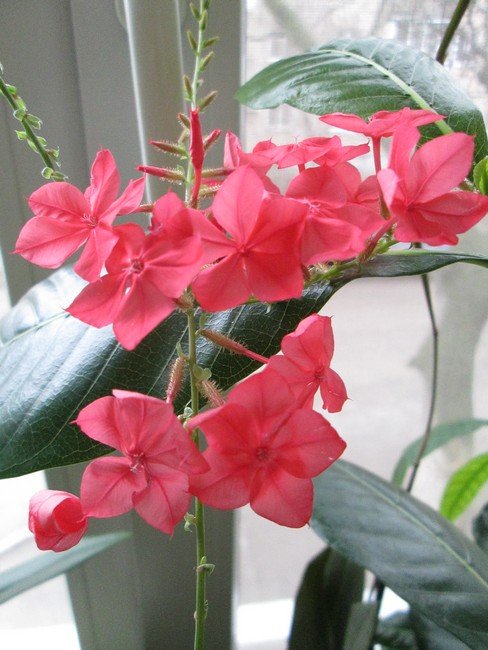
Red piggy is the least likely to decorate Russian windows, although the conditions of detention are the same for all species.
Plumbago: home care
Pig is a flower that is unpretentious and suitable for a novice grower. Deficiencies in care are visible immediately: the turgor of the leaves is lost, or she sheds them. Under favorable conditions, it grows quite quickly, it can bloom all year round. For full growth you need:
- abundant lighting. A southern window with direct sunlight that should dissipate at noon is the best option. West and east windows are also suitable for plumbago. In the back of the room, the piglet will not bloom, and its shoots will stretch out and shed the leaves. In the autumn and winter periods (with the exception of dormancy), additional artificial lighting is required. A pig after sleep or brought from the store needs to gradually get used to the lighting. Harsh light can harm the flower;
- the temperature should not be higher than 23 ° C, otherwise the leaves of the plant will begin to dry. In the summer, when it is too hot, spraying, shower, streams of fresh air are needed, in the winter period of rest - 10-12 ° C;
- from the beginning of the spring awakening until the very cold weather, watering is needed abundant, daily. Moist soil provides the plant with the strength for vigorous growth and flowering. The soil in the pot dries very quickly, it is important not to allow the earthen coma to dry out, this is detrimental to the inflorescences and roots of the flower. In winter, the topsoil should dry out before further watering. Water for irrigation needs at room temperature, separated. Brown leaves are a sign of irregular or poor watering;
- the flower has no moisture requirements at all. Spraying can be used to regulate the temperature rise in summer;
- fertilizer will help the flower during the period of active growth and flowering. A complex fertilizer for flowering should support the lead from spring to autumn. They should be entered every two weeks;
- pruning is necessary for the plant as an incentive for flowering and the growth of new shoots.Cut the stems by 2/3 in the fall after flowering and in the spring, removing weak winter shoots.
The plumbago curls very well, but since it does not have antennae or thorns, it cannot cling on its own. The exotic will look spectacular on supports, ladders or flower frames. Frequent pinching will help form a dense bush. The pig is also formed in the form of a tree.
The secret of exotic beauty
The decorativeness of the pig is in its flowering. In order for the plant to bloom actively in spring, it is necessary:
- with the onset of winter cold, gradually reduce the temperature to 8-12 ° C;
- reduce watering;
- give the plant complete rest;
- reduce lighting, but do not hide the flower in the shade;
- regularly ventilate the room.
Since the flowers on the shoots grow alternately, flowering continues for two to three months. With the onset of autumn, in order to stimulate the laying of new flower buds, you need to cut off the shoots 2/3 of the length. After such a procedure, a period of active growth of new shoots and flowering until winter dormancy will begin.
It is necessary to remove faded shoots, this exotic does not discard them by itself. In the spring, when pruning shoots, old peduncles are also cut off (about 5 cm from the length).
Plant transplant
A young plant requires a change of soil and an increase in pot volume each spring. An older plant needs a soil change every 2-3 years, and the topsoil can be renewed every spring. The pot must have a good drainage layer so that abundant watering is not harmful to the roots.
The soil needs nutritious and heavy. A mixture of sod land with sand and peat will add humus. A universal substrate for flowering crops is also suitable.
The lead is transplanted by the transshipment method, since the roots are fragile and easily damaged. After the procedure, the plant is cut and shaped.
Plumbago breeding method
Pig reproduces easily and effortlessly by cuttings. They take root quickly, they can be immediately rooted in a mixture of earth and sand. The size of the cutting is not so important, the main thing is that it has at least two leaves and the upper point of shoot growth. Cut cuttings are rooted in separate cups and placed in the light and warm (20 ° C), regularly moistening the soil. After two weeks, new borings acquire a root system.
The beauty reproduces well by seeds in small greenhouses. Seed germination is good, sprouts require hardening before planting in separate pots. A plant that has grown from seeds will bloom only after two years.
It perfectly fills the entire cavity of light windows, with its help you can create a phytowall or hedge. With proper care, the plant lives up to 10 years, delighting with its abundant and beautiful flowering. But for this, you should study the rules of planting and care.
